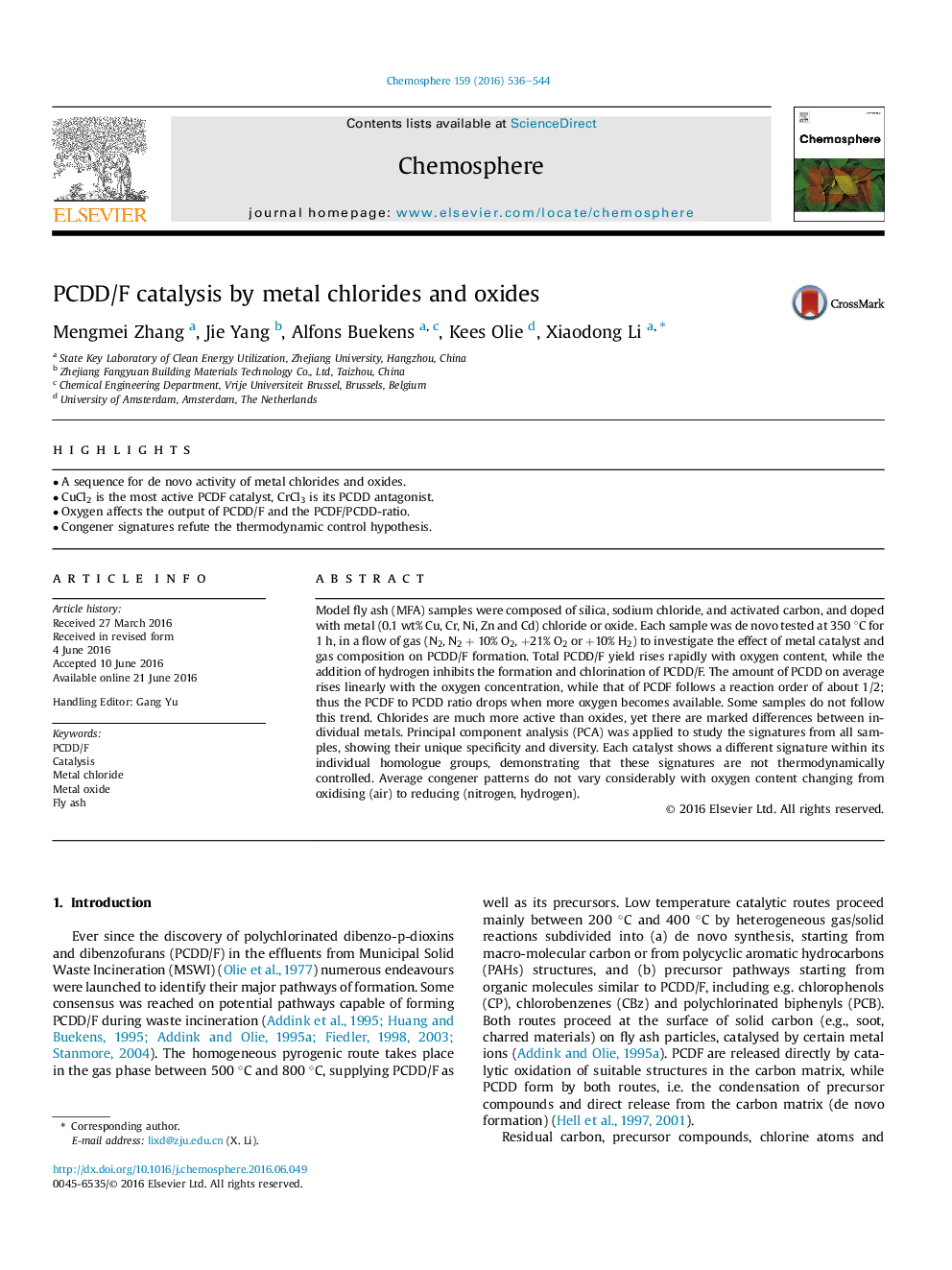| کد مقاله | کد نشریه | سال انتشار | مقاله انگلیسی | نسخه تمام متن |
|---|---|---|---|---|
| 4407431 | 1618812 | 2016 | 9 صفحه PDF | دانلود رایگان |

• A sequence for de novo activity of metal chlorides and oxides.
• CuCl2 is the most active PCDF catalyst, CrCl3 is its PCDD antagonist.
• Oxygen affects the output of PCDD/F and the PCDF/PCDD-ratio.
• Congener signatures refute the thermodynamic control hypothesis.
Model fly ash (MFA) samples were composed of silica, sodium chloride, and activated carbon, and doped with metal (0.1 wt% Cu, Cr, Ni, Zn and Cd) chloride or oxide. Each sample was de novo tested at 350 °C for 1 h, in a flow of gas (N2, N2 + 10% O2, +21% O2 or +10% H2) to investigate the effect of metal catalyst and gas composition on PCDD/F formation. Total PCDD/F yield rises rapidly with oxygen content, while the addition of hydrogen inhibits the formation and chlorination of PCDD/F. The amount of PCDD on average rises linearly with the oxygen concentration, while that of PCDF follows a reaction order of about 1/2; thus the PCDF to PCDD ratio drops when more oxygen becomes available. Some samples do not follow this trend. Chlorides are much more active than oxides, yet there are marked differences between individual metals. Principal component analysis (PCA) was applied to study the signatures from all samples, showing their unique specificity and diversity. Each catalyst shows a different signature within its individual homologue groups, demonstrating that these signatures are not thermodynamically controlled. Average congener patterns do not vary considerably with oxygen content changing from oxidising (air) to reducing (nitrogen, hydrogen).
Journal: Chemosphere - Volume 159, September 2016, Pages 536–544